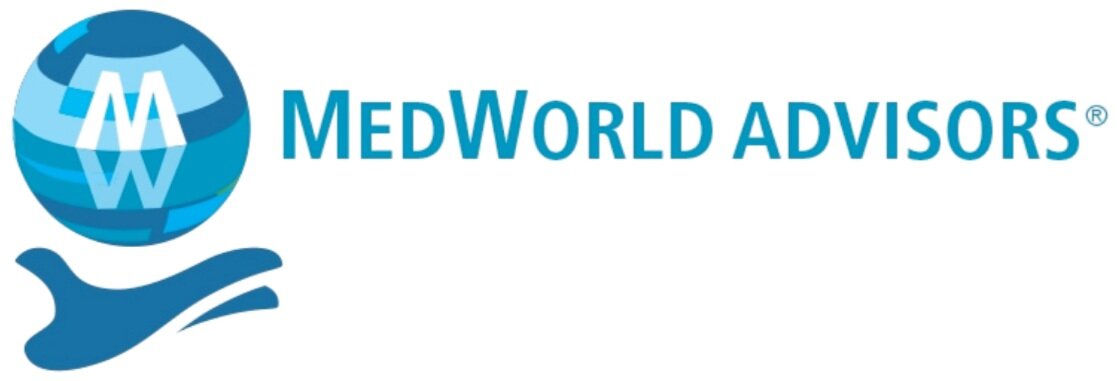How M&A Has Changed The MedTech Landscape In Two Decades
To view this article on the Medical Product Outsourcing Magazine website, click here.
Congratulations to MPO on its 20th anniversary. It is interesting to reflect on the past two decades in medtech, because the industry was in the midst of fundamental changes when the magazine was founded. It remains in a state of flux 20 years later, though the issues impacting device manufacturers and suppliers are much different.
In 2003, we were on the Fortune 500 side of the equation and driving change in various ways. Florence was working with OEMs like Stryker Corp., Philips, GE, and Johnson & Johnson,driving supplier change by fostering new innovation and strategic supplier partnerships. Dave was directly involved in the medtech supply chain as a global business leader for an OEM supplier group within a major medtech company. Given the industry’s developments at the time, we were always on one side of M&A or the other as a buyer or seller.
Twenty years later, we remain an integral part of the OEM-supplier dynamic as we facilitate M&A transactions. Our M&A advisory role allows us to glean exceptional insights about OEMs and their suppliers in 2023. We have had many extraordinary and memorable experiences over the last two decades that have helped shape our understanding of the medical device OEM-supplier relationship.
M&A has been and likely always will be a major driver of change within the medical technology industry. These transactions have impacted MPO and its readers in two distinct ways over the last 20 years: first by spawning consolidation among the major players and also by cultivating private equity (PE) ownership of OEM suppliers.
Consolidation through M&A has radically altered the medtech OEM landscape since 2003. Such a transformation is clearly evident from reviewing past MPO issues. The inaugural issue (June 2003) features the magazine’s first Top Companies report (which has become a favorite among readers); however, six companies no longer exist.
Tyco Healthcare: Listed at No. 4, Tyco Healthcare later became Covidien and is now part of Medtronic. Parts of Covidien are now at Cardinal Health, courtesy of Medtronic. The world’s largest medical device company sold its medical supplies business (within its Minimally Invasive Group) to Cardinal Health in April 2017 for $6.1 billion.
Guidant Corp.: With $3.2 billion in sales, Guidant ranked ninth on the list. Boston Scientific Corp. bought the company in early 2006 for $27.2 billion, outbidding rival Johnson & Johnson by nearly $9 per share. There were many reverberations of that acquisition, not the least of which was a breach of contract lawsuit from J&J, recalls, product liability suits, and a $600 million legal settlement with J&J.
Kodak Health Imaging: Kodak is one of the best-recognized names/brands in its field, at least for the (well) over-30 crowd. Kodak Health Imaging came in at number 14 on the list, with $2.1 billion in revenue. Toronto-based Onex Healthcare Holdings Inc. purchased Kodak’s Healthcare Group in early 2007 for $2.55 billion and renamed it Carestream Health. However, Carestream Health no longer makes MPO’s Top 30 list, probably because portions of it was sold to Philips in 2019.
Applera: Posting $1.6 billion in sales, Applera was listed at number 18. The company was comprised of the Applied Biosystems Group (Foster City, Calif.) and Celera Genomics Group (Rockville, Md.). By December 2006, Applera’s Celera Genomics Group dropped the “Genomics” from its name after acquiring full ownership of Celera Diagnostics, which was a joint venture with Applied Biosystems. Shortly after MPO celebrated its fifth birthday, Applera spun off its Celera Group as a separate company, completely detaching itself from the Applied Biosystems research instrument tool business. Celera, of course, is no longer on MPO’s top 30 list.
St. Jude Medical: Tied with Applera at number 18 with $1.6 billion in sales, St. Jude Medical Inc. was sold to Abbott Laboratories in 2016 for approximately $25 billion U.S. anti-trust regulators okayed the deal once Abbott agreed to sell its Vado steerable sheath and St. Jude consented to selling its Angio-Seal and Femoseal vascular closure products to Japanese medical device company Terumo (now an MPO Top 30 regular) for a combined $1.12 billion in cash.
Dade Behring: Among the top 10 in-vitro diagnostic manufacturers (listed separately from the device manufacturers) was Dade Behring, which ranked sixth with $1.3 billion in revenue. Not too shabby, considering the company filed for Chapter 11 bankruptcy in 2002. By 2005, the company employed more than 6,000 workers and had operations in 43 countries to serve more than 25,000 medical customers. In 2006 Dade Behring was the world’s largest clinical diagnostics firm. The following year, it was purchased by Siemens AG, an MPO Top 30 stalwart.
In a nutshell, six (or one-fifth) of the companies on MPO’s first Top 30 list from 2003 are no longer independent entities. Most are now part of a larger medtech industry strategic but nevertheless are still part of the most current Top 30 crop.
The OEM-supplier consolidation over the past 20 years has been significant, and it is interesting that the majority of that behavior has been driven by the growth of private equity investments into medtech. By some estimates, approximately 80% of privately owned (non-public) contract manufacturing organizations (CMOs) or contract design manufacturing organizations (CDMOs) belonged to private founder owners in 2010 and 20% were held by PE. Ten years later, that ownership ratio reversed itself. It has become more difficult for a PE to find a founder-owned medtech OEM supplier business to purchase—we know because PEs are connecting with us on a weekly basis to ask us if we know any new founder-owned companies for sale.
Some of the impacts of PE on the medtech CDMO/CMO landscape were noted in a recent MassMedic report. The analysis concluded that there were twice as many M&A transactions for CDMO/CMOs by PE firms than by industry strategics in the last two years. Major PE firms are now listed as owners of many major OEM supplier players, according to the report.
Some noteworthy PE-owned CDMOs include Viant Technology, Orchid Medical Group, Steripak, Veranex Inc., Resonetics LLC, Cadence Design Systems Inc., Cirtec Medical Corporation, Life Science Outsourcing, and Westfall Technik.
Some of the major PE firms involved include Vance Street Capital LLC, Water Street, Kohlberg & Company, Carlyle Group Inc., Endeavor Capital, AEA Investors, Sverica Capital Management, Rockwood Equity, and Argosy Capital Group Inc.
As the medical technology industry continues to evolve, M&A will clearly continue to play a key role in the sector’s future. It’s unavoidable because it has been baked into our collective DNA. We can only imagine what the industry is going to look like in another 20 years. Hopefully, MPO will still be the one to tell us.
Florence Joffroy-Black, CM&AA, is a longtime marketing and M&A expert with significant experience in the medical technology industry, including working for multi-national corporations based in the United States, Germany, and Israel. She currently is CEO at MedWorld Advisors and can be reached at florencejblack@medworldadvisors.com.
Dave Sheppard, CM&AA, is a former medical technology Fortune 500 executive and is now focused on M&A as a managing director at MedWorld Advisors. He can be reached at davesheppard@medworldadvisors.com.
To view this article on the Medical Product Outsourcing Magazine website, click here.

